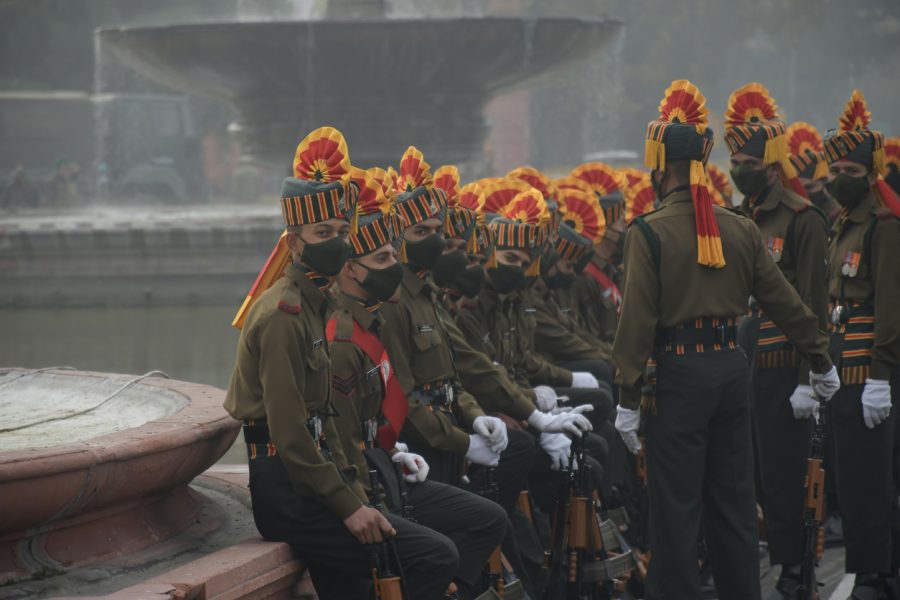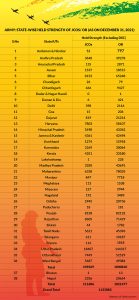
How prized is Army job in each state? Agnipath angst linked to that
In some pockets, Agnipath scheme has triggered deep disappointment; in some others, there is violent rage; we dive deep into the numbers that explain them

The country reacted with shock and angry protests to the Centre’s June 14 rollout of the Agnipath short-term military recruitment scheme. But, the reaction has not been uniform. In some pockets, there was just deep disappointment that aspirations for a career in the armed forces may have to be stowed away. In some others, there was violent rage.
The region-by-region, if not state-by-state, differences in response could be a function of how far military jobs are sought-after in the respective areas. Data, as shared by the Defence Ministry in the Lok Sabha in response to various queries, reveal that there are distinct patterns here. And these patterns get reflected in the response to Agnipath.

It must be noted that the data are mostly from the pre-COVID period. Many of those selected in the 2019-20 recruitment rallies — 95 such rallies were held during the year — are still awaiting recruitment.

Catch The Federal’s LIVE coverage of Agnipath events here
UP, Bihar account for the bulk
Initial protests started from Bihar and soon spread to Uttar Pradesh. It was no surprise as these two states contribute to the largest chunk of recruitments in the non-officer categories.
According to an answer to a Parliament question on April 1, 2022, by Minister of State for Defence Ajay Bhatt, out of a total strength of 13.13 lakh non-officers in all the three wings – Army, Navy and Air-force — 3.12 lakh came from these two states as on December 31, 2021. That is almost 24 per cent of the total strength of the armed forces, excluding those in the officer rank.

The non-officer ranks include Junior Commissioned Officers (JCOs) and Other Ranks (ORs) in the Army, Sailors in the Navy and Airmen in the Airforce. Each wing of the armed forces conducts its recruitment rally separately and the parameters are unique to each.
Agnipath decoded: How to join, salary, benefits — and criticism
Further, different Army regiments conduct their recruitments independently, in line with their specific needs. For example, the Jat regiment has specific height requirements for its recruits. The three stages for recruitment though are the same – a physical test is the first stage and those who clear it go for a medical test followed by a written test.
UP tops the numbers
Uttar Pradesh sends the maximum number of recruits to the armed forces; no surprise, as the state has the largest population in the country. In the Army, recruits from Uttar Pradesh were a huge 1,62,724. The number drastically drops for the Navy (11,946) and Airforce (35,942), though it still remains the highest in the country.

Of the over three lakh recruits from UP and Bihar, the bulk – 2,36,124 (21 per cent) of the total 11,10,079 — were in the Army, while the Navy and Airforce accounted for 17,910 (28 per cent) out of 63,700 and 57,873 (41 per cent) out of 1,38,994 personnel, respectively.
Also read: A look at Agnipath-like schemes adopted by other nations
Within Uttar Pradesh, too, as per popular convention, the maximum recruits come from the eastern part of the state and Bundelkhand. Though exact figures for these two regions are not available, the spread of protests against Agnipath would attest to this. These two regions are also where rural distress is far greater than in other parts of the state; hence, an Army job is much sought after.
If to UP and Bihar, we add Jharkhand and West Bengal – the east Indian states where violence has been more widespread than other parts of the country – the figure reaches 3,94,495, a little above 30 per cent of the total strength of all three wings. Of this, 3,08,187 are in the Army itself, with the Navy and Airforce accounting for 21,109 and 65,199, respectively.
The ‘absolute majority’
In fact, East and North Indian states – Uttarakhand, Rajasthan, Punjab, Himachal Pradesh, Haryana and Jammu & Kashmir — combine to contribute nearly 65 per cent of the total armed forces personnel.
Besides Uttar Pradesh, these five north Indian states contribute 4,55,567 (34.7 per cent) personnel to the total strength. As expected, most of the recruitments are for the Army – Punjab (90,290) on the top, followed by Rajasthan (80,034), Haryana (65,910), Uttarakhand (59,978), Himachal Pradesh (48,840) and J&K (46,855). Among these, protests have been seen in Punjab, Rajasthan and Haryana.
Not many protests have been reported from Himachal Pradesh and Uttarakhand, though a job in the Army is much sought after in these two states. In fact, according to some estimates, Uttarakhand contributes the maximum recruits to the army, if measured by their proportion to the state’s population.
Also, protests in these states tend to be small and isolated due to the mountainous terrain and thus do not attract much attention, more so when much larger and violent protests are being reported from other parts of the country.
The status in the west
Maharashtra and Gujarat – the two main states in the West – have so far remained quiet as far as protests against Agnipath are concerned. According to some observers, one of the key reasons states like Maharashtra — which sends an impressive 89,313 recruits to the armed forces, with a large number, 84,373, going to the Army — have largely remained silent is that the employment generation here through private players is better than in the Hindi heartland.
Gujarat is expectedly quiet, it being the home state of both the Prime Minister and the Union Home Minister. Also, the state sends relatively fewer recruits to the armed forces – a total of 23,901, with 22,033 going to the Army – vis-a-vis its size and population. Again, this is no surprise as Gujarat is a relatively ‘wealthy’ state and most people opt to go for business and trade.
The south side story
As compared to the North and the East, the five South Indian states – Andhra Pradesh, Telangana, Kerala, Karnataka and Tamil Nadu — contribute 15 per cent (1,96,945) to the non-officer’s strength in the armed forces. According to some retired army-men, a large number of the candidates from South India join the technical corps in the Army, like Signals and Engineers.
Of the South Indian states, where the protests have been largely muted (except in parts of Telangana), the maximum numbers in the Army come from Tamil Nadu (51,017), followed by Andhra Pradesh (42,926), Kerala (37,531) and Karnataka (32,333).
Telangana, the only state in the South from where violence has been reported, accounts for the lowest (10,798) number. It would be interesting to see what percentage of Telangana comes from Secunderabad, where a train was set afire.
Interestingly, the sequence changes among these five states when it comes to the Navy and the Airforce. In the Navy, Andhra Pradesh (3,677) tops, followed by Kerala (2,542) and Karnataka (1,052). Tamil Nadu, which sent the highest number of recruits to the Army, comes fourth on the list with 912 personnel, while Telangana brings the rear again with 574 recruits.
In the case of the Airforce, there is an interchange in the first two positions. Kerala tops here with 5,404 personnel, followed by Andhra Pradesh (3,963), Karnataka (1,692), Tamil Nadu (1,475) and Telangana (1,049).
The North-East outlier
As far as the North-East is concerned, there are no surprises. Only 48,902 non-officers come from the region, comprising just 3.7 per cent of the total strength. Of these, maximum represent the Army (43,816), with Airforce (3,301) and Navy (1,785) accounting for the rest. Assam, the biggest state in the region, sends 20,052 men to the Army, followed by Airforce (1,386) and Navy (763).
The North-East figures, however, spring one minor surprise. Leaving aside Assam, Manipur is way ahead of the other states (Meghalaya, Mizoram, Nagaland, Arunachal Pradesh, Tripura and Sikkim) in the region – 10,441, with a break-up of Army (8,565), Airforce (1,417) and Navy (459).
Next in the list of these states is Nagaland – which even has a regiment to its name – with 3,851 men in the armed forces, less than half of Manipur’s strength.

